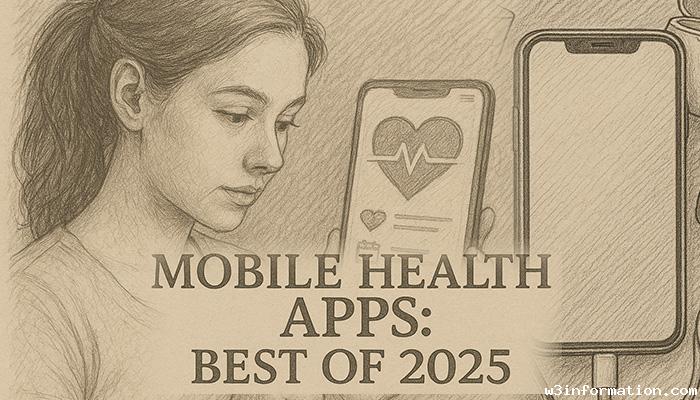The Impact of Mobile on E-Commerce
Smartphones have revolutionized our shopping processes. Mobile devices now play a vital role in the e-commerce ecosystem by enabling shoppers to conveniently search for products, compare options, and complete purchases. The growing dominance of mobile commerce in online sales means businesses must now integrate mobile elements into their e-commerce strategies. The blog examines how mobile technology affects e-commerce through its emerging trends as well as the associated challenges and business opportunities for both consumers and businesses.
The Shift to Mobile Shopping
a. Mobile Shopping Growth
The past ten years saw mobile commerce undergo rapid expansion due to the widespread adoption of smartphones and mobile applications. Reports show mobile devices generate over half of all global online sales and this trend continues to grow. Consumers are increasingly using their smartphones as the main device for conducting shopping activities.
- Mobile Apps: Brands use mobile apps to improve the shopping experience through personalized features and straightforward checkout options while sending push notifications.
- Mobile-Friendly Websites: E-commerce businesses make their websites mobile-friendly by implementing responsive designs that deliver speed and user-friendly navigation.

Convenience and Accessibility
The advent of mobile devices has transformed shopping into a seamless experience for consumers by enabling them to shop wherever they are including their homes or while they wait in public spaces.
a. 24/7 Access to Online Stores
Mobile e-commerce eliminates geographical and time-zone limitations by enabling shopping at any time from any location.
- Shoppers can explore product catalogs and track shipments while making purchases without needing a computer or being limited by store operating hours.
- Apple Pay, Google Wallet and mobile banking applications have streamlined the checkout procedure while speeding up transactions and enhancing security.
b. Instant Gratification
Mobile shopping lets users instantly obtain products and services which meets their convenience needs. Mobile-driven features including one-click ordering and instant order tracking enable users to finish purchases with little effort.
Mobile-Optimized Payment Solutions
Mobile commerce largely depends on allowing users to make payments easily through their mobile devices. E-commerce platforms continue to simplify product purchasing through enhanced mobile payment capabilities.
a. Mobile Wallets and Digital Payments
Payment methods through mobile wallets like Apple Pay, Google Pay, and PayPal facilitate seamless transaction experiences. These payment systems secure credit card information and enable tap or scan purchases which enhance both convenience and security for consumers.
- QR Code Payments: Through mobile apps users can pay for items by scanning QR codes with their mobile camera.
b. Seamless Checkout Experience
E-commerce platforms work to create a smooth checkout process through minimization of purchase completion steps. Mobile apps are now integrating features like auto-fill forms and guest checkout options which allow users to complete purchases with minimal hindrance.
Personalization and Targeting
The mobile platform stands out in e-commerce for its real-time data collection capabilities regarding consumer behavior and preferences. Businesses use collected data to create personalized shopping experiences while providing better-targeted advertisements and product suggestions.
a. Location-Based Targeting
E-commerce businesses can use location-based services on mobile devices to deliver targeted deals and promotions according to user location.
- Geofencing: Businesses have the capability to set up location-based triggers which send push notifications to customers when they are in vicinity to either their physical store or products that they previously expressed interest in.
b. Behavioral Analytics
E-commerce applications on mobile devices capture data regarding users' browsing activities and purchasing patterns which enables businesses to deliver customized recommendations and special discounts.
- Push Notifications: Brands utilize push notifications to deliver timely alerts about sales and discounts which adapt to user behavior to boost conversion rates.
Improved Customer Engagement
E-commerce brands now have enhanced opportunities to connect with their customers through mobile devices. Through the use of social media integration alongside mobile apps and in-app messaging businesses can establish deeper interactive connections with consumers.
a. Social Commerce
Instagram, Facebook and Pinterest now feature e-commerce capabilities which enable users to make purchases from their social media feeds or stories.
- Shoppable Posts: These platforms allow businesses to attach product tags to their posts which simplifies consumer purchases right within the app.
b. Customer Support via Mobile
- Businesses can provide immediate customer support via live chat, messaging and chatbots through mobile apps which enhance user experience.
Challenges of Mobile E-Commerce
Mobile e-commerce delivers important advantages yet businesses need to work through multiple challenges to enhance mobile shopping for users.
a. Mobile Website Optimization
The mobile website needs adjustment to function well on smaller screens while providing quick loading times and straightforward navigation. When a website isn't optimized for mobile users it creates an unsatisfactory experience which increases the likelihood of users leaving without interacting and results in lost revenue opportunities.
- Responsive Design: E-commerce platforms require responsive design to adjust to different screen dimensions and devices which creates a smooth shopping process for users.
b. Security Concerns
The increasing use of mobile devices for shopping brings security to top priority status as a major concern. Mobile devices face higher security risks from theft and hacking while unsecured networks put sensitive data at risk.
- Data Encryption: E-commerce businesses must use SSL encryption along with secure payment gateways to safeguard their customers' financial and personal information.
- Two-Factor Authentication (2FA): Mobile apps use 2FA to protect user accounts and transactions as standard practice.
The Future of Mobile E-Commerce
Mobile e-commerce has a promising future because emerging technologies are constantly transforming shopping behavior. The mobile shopping journey will be enhanced through technological developments in Augmented Reality (AR), artificial intelligence-powered shopping experiences, and voice commerce platforms.
- Augmented Reality (AR): Augmented Reality enables shoppers to test products virtually by trying on clothing and visualizing furniture in their homes which improves shopping experiences and increases sales.
- Voice Shopping: The rising prevalence of virtual assistants like Alexa and Google Assistant forecasts a substantial increase in voice shopping capabilities which will enable consumers to execute purchases through voice commands.
Conclusion
Mobile devices have reshaped the e-commerce industry by delivering enhanced flexibility and convenience for both businesses and customers while increasing operational efficiency. Mobile technology now serves as an indispensable tool for e-commerce businesses and consumers because it delivers personalized shopping experiences and mobile payment options while boosting customer engagement through social commerce and in-app support. The influence of mobile technology on e-commerce will expand as technology progresses, which will generate additional business opportunities and challenges to handle.
 DIY Holiday Decor Ideas on a Budget
DIY Holiday Decor Ideas on a Budget
 How to Create a Healthy Meal Plan for the Week
How to Create a Healthy Meal Plan for the Week
 Discover your top 10 comforting meals to enjoy during the winter season
Discover your top 10 comforting meals to enjoy during the winter season
 Tips for Stress-Free Holiday Travel
Tips for Stress-Free Holiday Travel
 Mobile Video Editing Apps to Try
Mobile Video Editing Apps to Try
 Mobile Health Apps: Best of 2025
Mobile Health Apps: Best of 2025